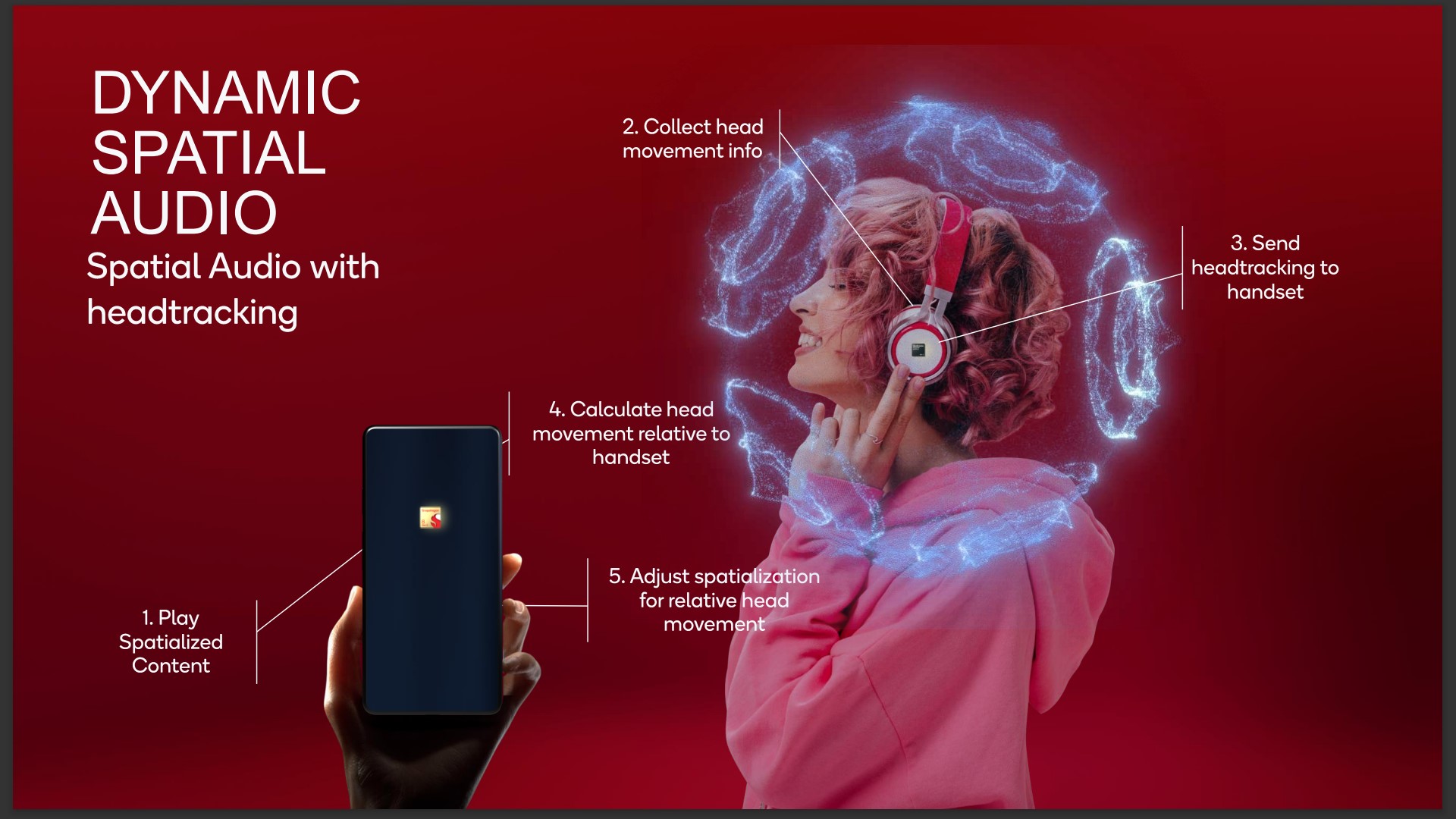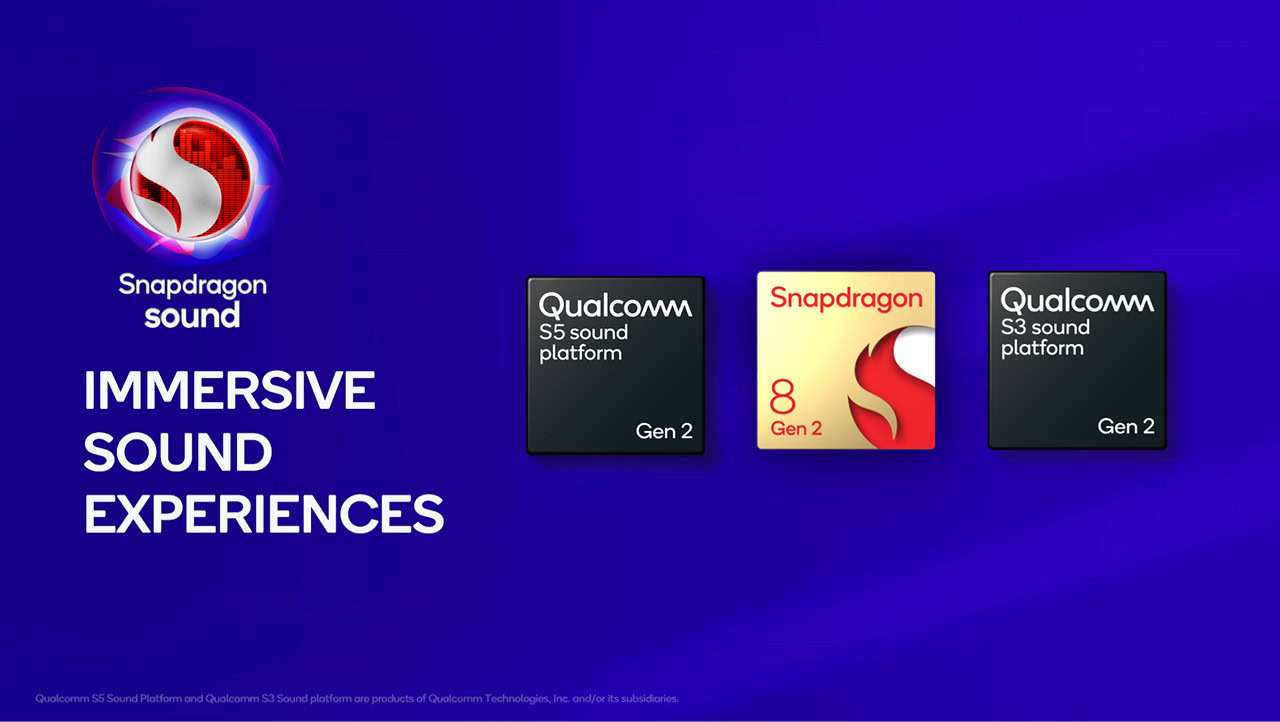Affiliate links on Android Authority may earn us a commission. Learn more.
The future of spatial audio sounds amazing and left me wanting more
Published onNovember 21, 2022

According to Qualcomm’s State of Sound report, spatial audio is pretty hot right now. More than 40% of those surveyed said they’d be willing to pay more for headphones with the feature, so naturally, Qualcomm threw its hat into the ring. It announced Dynamic Spatial Audio as a new feature in its Snapdragon Sound suite and two new audio platforms — the flagship S5 Gen 2 and midrange S3 Gen 2. Not content to talk the talk, Qualcomm had a set of demos ready to flex its audio muscle at this year’s Snapdragon Summit.
The Dynamic Spatial Audio demo itself was simple — a quick minute and a half to show what companies can do — but it’s enough to convince that Qualcomm means business and is able to compete with the Apple W1 and H1 chips that power popular headphones in this space. Taking on Apple’s spatial audio lead might be a modern version of the tortoise and the hare, but at least Qualcomm is off the starting line.
What is Dynamic Spatial Audio, anyway?

First, let’s get into spatial audio itself. The feature has been around for a few years. Apple and Beats helped popularise the feature, as mentioned above, but Samsung, Sony, and others have similar implementations. It works like a portable version of home surround sound, splitting your music or movies into different streams from all directions. With traditional spatial audio, those streams would stay in place as you turned from left to right. Streams on the right would remain on the right, while those on the left would stay on the left.
Now, Qualcomm is using its S3 Gen 2 and S5 Gen 2 platforms in concert with Snapdragon 8 Gen 2 devices to enable dynamic tracking. Instead of keeping streams locked to one side or the other, you can turn to face each stream, with up to 24 points of localization. It allows you to shift and emphasize each element of a song, movie, or game individually.
Dynamic Spatial Audio improves the formula, allowing you to reorient within the 24 streams of audio coming at you from every direction.
However, not all content comes ready for spatial audio out of the box. Movies, games, songs, and shows must still support 5.1, 7.1, or Dolby Atmos formats to enjoy the full might of spatial audio (dynamic or not). Currently, services like TIDAL, Apple Music, HBO Max, and Hulu offer some compatible content, but not everything qualifies. Qualcomm hasn’t announced backward compatibility with the Snapdragon 8 Plus Gen 1 or 8 Gen 1, either, so you’ll need the latest and greatest once it hits the market.
A good first impression

Qualcomm’s Dynamic Spatial Audio demo was pretty tight and controlled, but it offered just enough of a taste to leave me wanting more. I was handed a Snapdragon 8 Gen 2 reference device and a pair of noise-cancelling earbuds and told to press play. The experience started with instructions to look to your right and left, following the commands of an invisible narrator. Then, a set of footsteps walked past my ear and into the foreground before a series of music tracks started from all angles. By the time you paid attention to each sound, the whole demo was done.
Experiencing recalibration in real time only made me more excited for its arrival — as long as content supports it.
Despite the tight control, the demo wasn’t perfect, which was a good thing. I started out facing slightly away from the reference device, which put the audio off balance for a few seconds. The device and earbuds quickly calibrated, adjusting to ensure I was getting an experience that matched my positioning. This adjustment will hopefully be faster when finished products come to market, but it was a good way to see how quickly the Snapdragon 8 Gen 2 and S5 Gen 2 platforms can communicate.
Regarding the sound, it was tough to top the footsteps. I know that music from all directions was meant to be the focus, but I like my music in stereo — as it’s usually mixed. The footsteps, on the other hand, helped deepen my immersion in the experience, and I could see them shining in movies or games. Thrillers immediately came to mind — I’d sign up to be right in the middle of those subtle sound effects, the types that make your skin crawl just a little bit.
Music is OK, by Dynamic Spatial Audio will be far more immersive for movies and games.
We don’t yet know which OEMs are ready to pounce on the S5 Gen 2 or S3 Gen 2 platforms, but it will mean you’ll have to invest in new headphones. It’ll also be a few months before we see devices with Qualcomm’s Dynamic Spatial Audio hit the market, but what do you think? Let us know in the poll below.